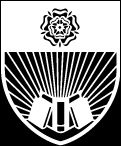Lily A – Year 12 Student
Effortlessly surfing the Internet and casually downloading web images, we rarely pause to think how all of the daily actions we so easily take for granted in our lives were actually made possible. Have you ever wondered how a hologram works? How detailed satellite images allow us to navigate world landscapes from the comfort of our home on Google Maps? Let us unmask one of the hidden gems who helped to widen our scope of the world.
Valerie L. Thomas was born in Baltimore, Maryland in the United States on February 8th 1943. Captivated by mathematics, physics and electronics at an early age, she possessed a deep interest for mechanics even though girls were not encouraged to study these subjects at the time. Unstirred by a society which undermined girls, at the age of eight she returned home with a library book called the “Boy’s First Book on Electronics”; a stereotypical title surely should have caused her to shy away from her early enthusiasm. But did it? This future innovator was just beginning to emerge.
Intelligent.
There was a glimmer of talent. Attending Morgan State University in Baltimore, she was one of only two women majoring in physics in her class. Graduating with honours from the University, immediately Valerie received a job as a data analyst with NASA in 1964. Immersed in the world of computing. A world different to ours; a world where computers still seemed like a futuristic invention. Valerie Thomas herself claimed that she had “not seen a computer except in science fiction movies”, when she first began working at NASA. Embarking on the dawn of her new career, Thomas began working on NASA’s Landsat program in 1970 – allowing us to view Earth from space via satellite pictures. Tirelessly, she helped develop software to decode computer data from the images taken into a format that other scientists could understand: this allowed crucial data analysis, such as monitoring the climate, and is still used in research today.
Unlimited by stereotypes and unbound by the horizons of our very world, it is evident that Valerie had a persistent passion for problem solving. But did she stop there?
Innovative.
A sparkle of enthusiasm led to innovation. Fascinated, intrigued and curious by a demonstration she had seen with a light bulb, Valerie Thomas became interested in how concave mirrors reflect images. Unlike regular flat mirrors, the object reflected appeared to be in front of the mirror instead of behind it (just like a 3D illusion or hologram)! This led her to invent the illusion transmitter; a device producing a 3D illusion at one end, and reproducing the same illusion in a different device at another end. A patent for the illusion transmitter was granted in 1980, a unique honour which only a few Black inventors hold, and it is still used by NASA today. She hoped to use this invention for 3D TV, or even as a tool that aided surgeons with looking inside the body – however, this might be a possibility in the future.
Inspirational.
Creative and compassionate, she was a guiding light for others. Wholeheartedly, she managed projects such as the Space Physics Analysis Network, interconnecting scientists from across the globe. Additionally, she became an ambassador for young scientists, particularly girls and African Americans like herself, getting involved in organisations like Women in Science and Engineering and Shades of Blue – promoting interest in aerospace careers.
Intelligent, innovative and inspirational, Valerie L. Thomas’ contribution to NASA and unwavering love for her work has had a dramatic influence on scientists, students and individuals. How could we ever forget people like her? Sometimes the rarest jewels have the most distinct shine.
References
https://massivesci.com/articles/valerie-thomas-science-hero-nasa-landsat/
https://www.britannica.com/biography/Valerie-Thomas

